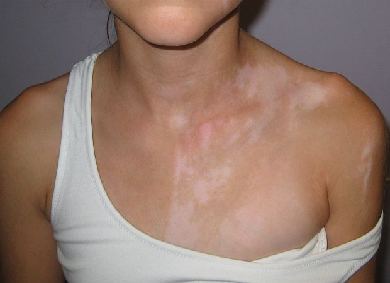Vitiligo is a disorder in the skin which is caused by the death of the melanin in the skin cells. Melanin is what gives color to the skin, and if this does not function well, then the skin forms white patches in some specific areas. This condition is common in people having autoimmune disease like heart disease and diabetes. This is also more common in people with darker skin.
Treatment options for vitiligo
There are multiple ways of treating and vitiligo. Options range from topical creams to corticosteroid creams which help in gradually repigmenting the skin through daily applications. Some other people will go for light therapy, which involves exposing the affected skin to ultraviolet radiation. This helps in suppressing the immune response which in turn allows the melanocytes to repigment the skin. There are also some who would choose the bleach method instead of the repigmenting methods. This method is somewhat tricky and difficult. However, after bleaching methods, there may be some brown spots remaining on the skin.
Skin dye for vitiligo
Other than these, some people would opt for skin dyes in order to cover up the problem of vitiligo. There are many types of dyes available, like dyoderm or dihydroxyacetone.
Dyoderm is the most commonly used dye, and is also one of the most effective. Dyoderm has shown good results in patients who have tried it. Dihyroxyacetone, its active ingredient, is also known as DHA. This acts on the dead cells on the epidermis, giving rise to a brown coloration of the skin. After some weeks, however, the brown color will fade as DHA does not actually affect the melanocytes nor treat vitiligo. And because it fades, dyoderm needs to be applied every week or so.
People who have dark skin may not benefit much from the use of this skin dye. This is because it may not produce color that would match their natural skin color, but at least it would minimize the contrast.
The downside of skin dyes
One major disadvantage of using a skin dye like dyoderm is its reaction to sunlight. DHA can cause a rise in skin-damaging oxidizers after sunlight exposure, so it is advised that the patient keeps away from sunlight exposure up to 24 hours after application to avoid being exposed to high levels of these harmful oxidizers.
The dyes should be applied as per the instruction of a doctor or according to the literature that accompanies the dye. It is thus important to first study the instructions and precautions in order to minimize possible side effects. If you have any doubts about how to apply the formulation, it would be best to consult your doctor.
It is also equally important to first consult a doctor even before buying skin dyes to know whether this treatment option could work for you or not. As with other methods, not all would fit every person, and use also depends on your health condition. You should also be aware that when side effects like irritation on the skin or any other burning sensation occurs, your doctor must immediately be consulted.
How To Use Skin Dye For Vitiligo Cure?,





















